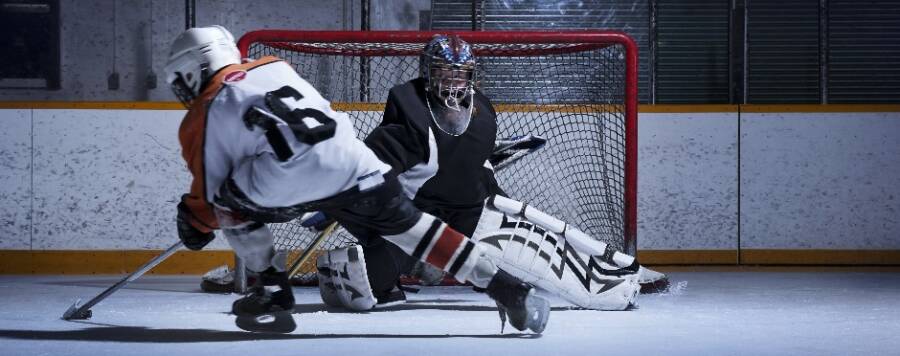Take ACL (Anterior Cruciate Ligament) injuries for example. Although sports such as soccer, football and basketball typically dominate the conversation surrounding the recovery process of an ACL injury, these types of injuries also occur in ice hockey. The lack of discussion regarding ACL injuries in hockey can make it difficult for those rehabbing these injuries to know what to expect.
For instance, the immediate recovery from ACL surgery is consistent in both athletes and non-athletes alike. There is typically a long recovery period of 6 to 12 months before an athlete can return to sports that involve running and cutting. Range of motion into both flexion (bending the knee) and extension (straightening of the knee) are major priorities to ensure a progression toward strengthening at the appropriate pace. A proper health provider (physical therapist or athletic trainer) is trained to progress a patient through this difficult time with the guidance of a surgeon.
Most ACL injuries that occur in hockey are traumatic in nature by way of a collision with a player, the boards, or the ice and are complicated with the involvement of medial collateral ligament (MCL) and potentially the meniscus. Since ACL rehabilitation is a bit unique in ice hockey due to the nature of the sport and the demands it places on the knee, I have outlined some things that athletes should take into consideration when returning to play after this type of injury occurs.
Skating and Rehabilitation
When rehabbing after an ACL injury, the skating stride is a unique element of return to play because it requires the player to generate forces through the limb in all directions while the other knee is in deep flexion to provide stability and balance. These phases in skating are commonly divided into two categories: the push leg and the stance leg.
A transition in therapy from bilateral training to progressive single leg strength training is essential to ensure the knee is able to tolerate sustained holds in a deep knee bend through both legs to generate power during each of these phases while maintaining proper knee mechanics. The athlete will have to tolerate pushing off the affected leg repeatedly to move from one end of the ice and allow the individual to change directions quickly. This requires strong hip and quadriceps control to prevent compromising stresses to the knee (valgus forces). These stresses can be seen off the ice when a player is pushing off a slide board or with lateral cutting movements and can be viewed when the knee collapses inward. As the individual progresses through their therapy, this should be a key marker prior to their return to a return to the ice. This will allow the individual the opportunity to progress through their skating tasks with a reduced likelihood of swelling and pain later in their recovery. Prior to returning to competitive play, the individual should feel pain-free and stable with the following:
Forwards and Defenseman
- Stopping (snow plow->hockey stops)
- Long strides
- Backwards C-cuts
- Face-offs
- Shooting
- Quick starts (V-starts, cross over starts)
- Forward Crossovers
- Backward Crossovers
- Progressive simulated activities (board battles, puck protection, read and reaction drills)
Additional Goaltender Activities
- Side to side edge work (standing)
- Multidirectional positioning (T-push from post to angles)
- Stationary weight shifting in butterfly (no lateral movement)
- Lateral
- Standing <->butterfly training
- Game simulation drills
This list is great for players to focus on while progressing through their later stages of therapy and when cleared by their surgeon and their physical therapist/AT:
- Dynamic warm ups (progress from single plane->multiplane-> multiplane plyometric training)
- Progression in squat tolerance
- Progressions in single leg strength training
- Progressions in no weight bearing core strengthen from single plane ->multiplane
- Progressions in weight bearing core strengthening
- Single leg hoping forward ->diagonal hops
Make sure to consult your physical therapist if you have any questions about your recovery process or how to effectively return to sport during your journey. For information about Athletico’s ACL 3P Program, which can help athletes minimize the risk of ACL injury as well as help those who have experienced an ACL injury progress after surgery, please email ACL@athletico.com.
The Athletico blog is an educational resource written by Athletico employees. Athletico bloggers are licensed professionals who abide by the code of ethics outlined by their respective professional associations. The content published in blog posts represents the opinion of the individual author based on their expertise and experience. The content provided in this blog is for informational purposes only, does not constitute medical advice and should not be relied on for making personal health decisions.

 width="900"
height="356"
>
width="900"
height="356"
>
